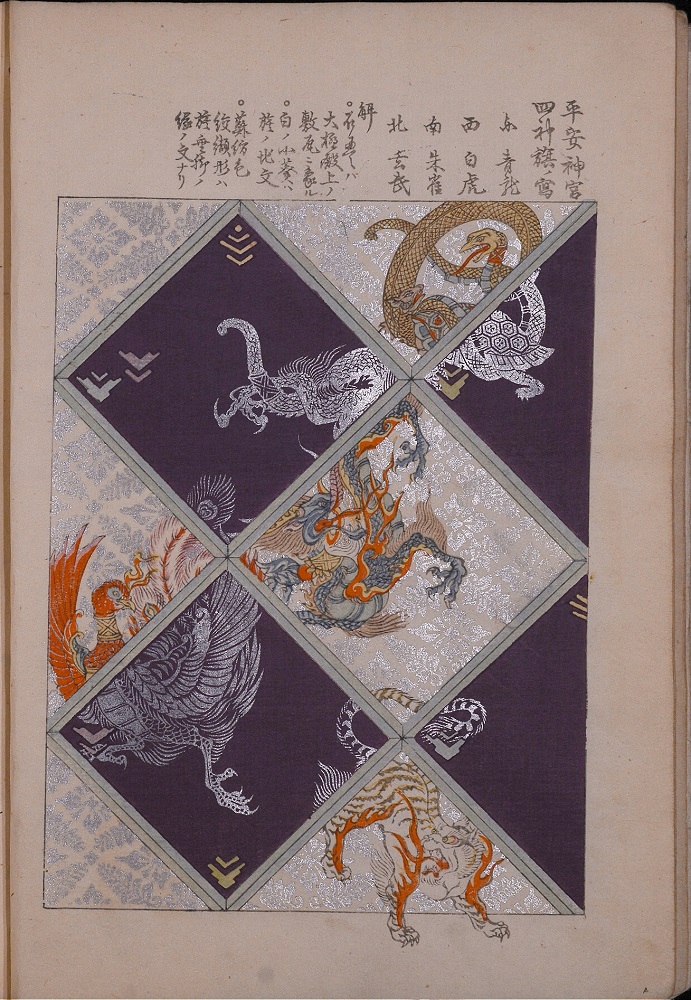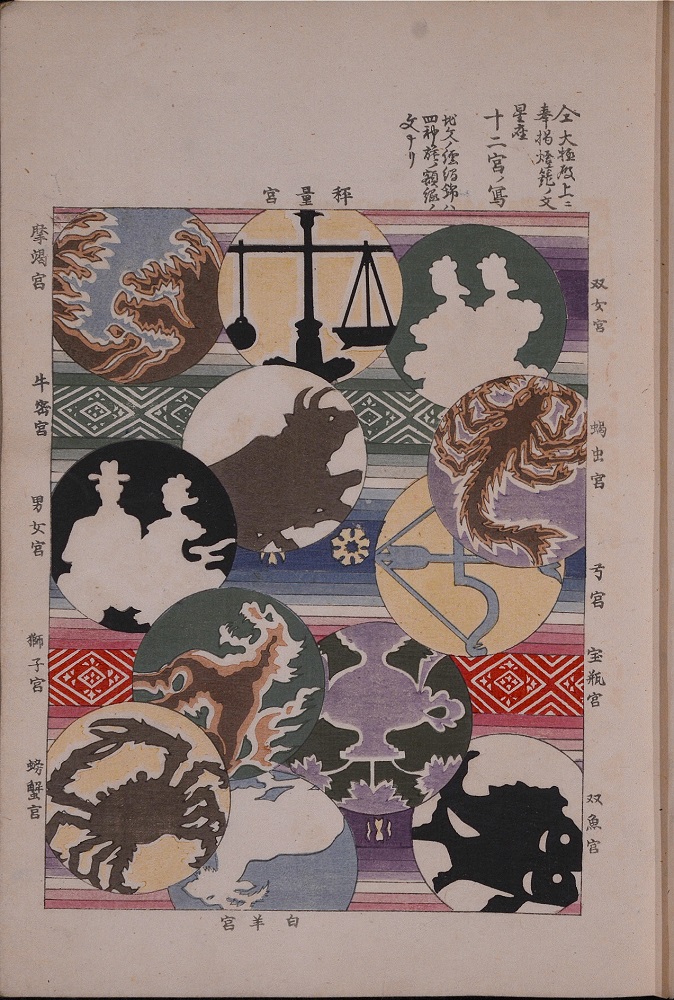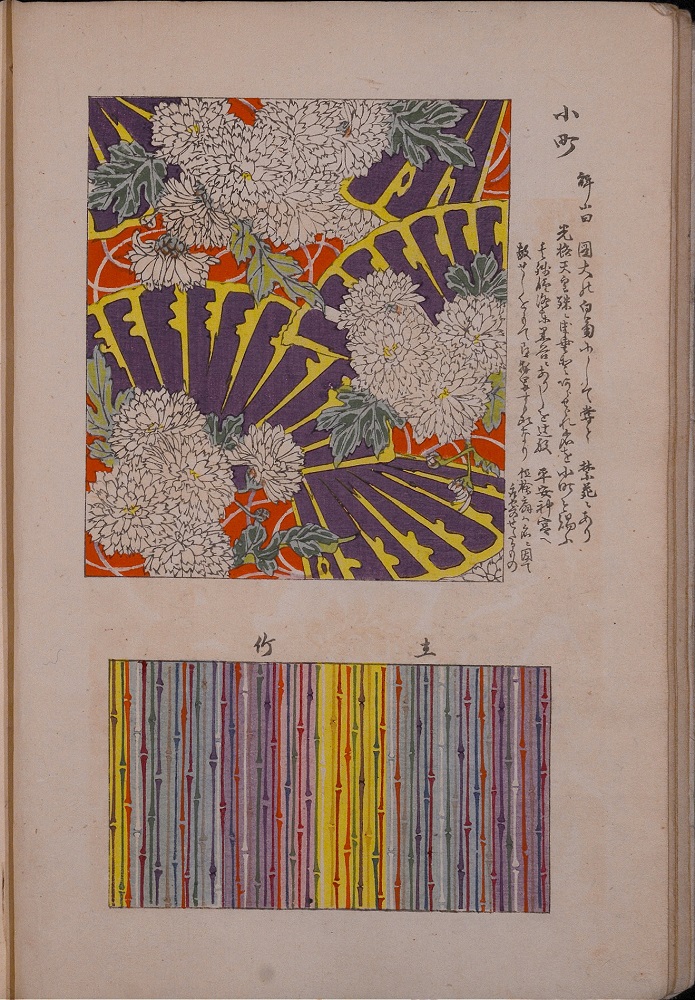Keika zuan: kōhen jō 京華 図案: 後編上
Author: Hasegawa, Keika 長谷川, 契華
Publisher: Yamada Unsōdō 芸艸堂
44 pages, vertical format with stitched fukurotojii-type binding (double sheets stitched on the spine) with 4 knots and pouch pages with an inner reinforcing sheet. Polychrome woodcut plates.
This volume collects the works of Keika Hasegawa, a Japanese artist active between the last decade of the 19th century and the early 20th century, who was part of the entourage of Kyoto artists who collaborated with the publisher Unsōdō.
The title of the book, Keika zuan, can be translated as The Design of Keika, where the term design, rather than referring to our modern graphic design, indicates a concept of drawing typical of Japanese art, which aims to establish connections with the indigenous pictorial tradition while maintaining a continuity with the subjects and art of past centuries.
The cover on which the title is printed is decorated with floral patterns, referring to the character ka, which means flower and is also contained in the name Keika, albeit written in different characters. This is a playful and refined linguistic device, used very often in Japanese poetry to create double meanings, possible because of the many homophonies possible in reading the characters.
The document owned by the General Library is the first volume of a supplement in a larger series of 6 documents: in order were published Vol 1 (上)・Vol 2 (下)・supplement 1 後篇, supplement 2 続篇 heaven 天・terra地・men 人. The complete work is available at The National Diet Library of Japan.
The polychrome pages exhibit decorative motifs in single or double frames, each accompanied by a description of the theme depicted. The multi-matrix printing technique returns the subjects to us with great precision and minuteness, and the colors are vivid and vibrant. There are inserts in metallic colors and overlapping textures; the forms are scrambled and recomposed, offering the reader more or less usual motifs, but of great iconographic richness and are endowed with a freshness that makes them suitable even for contemporary taste.
Among the illustrations are diverse subjects: quotations from classical Japanese motifs; naturalistic elements; abstract motifs; influences from the Western world, with which Japan had for some years now come into overbearing contact, are also evident.
All the elements are depicted in an unassuming manner, and, like the others, the natural elements sacrifice their more realistic features in favor of bold coloring and rhythmic, geometric textures.
Hasegawa Keika was not new to publishing with the publisher Unsōdō: in fact, in 1893 the publisher had given to the press the three volumes entitled Keika hyakukiku, Keika's Chrysanthemums, whose publication ended in 1904.
Unsōdō, a publishing house that still exists today, was founded in Kyoto in 1891. It specialized in producing art books, exercise manuals on painting, volumes on theater and ancient crafts, and collections of costumes. Soon the trade expanded from Kyoto to Osaka, Nagoya, and Tokyo, and then to territories under Japanese administration in China, Korea, Manchuria, Taiwan, and Sahalin. Through Japanese merchants its publications reached as far as Europe, enabling artists and craftsmen to come into contact with Japanese art and taste, which, after all, had given rise to a veritable fashion in those years.
Bibliography
Rossella Menegazzo, Eleonora Lanza, Japan. Drawing and Design. From Meiji picture books to contemporary art posters, Varese, Nomos Edizioni, 2021
More links




